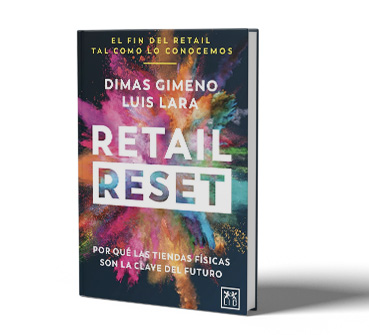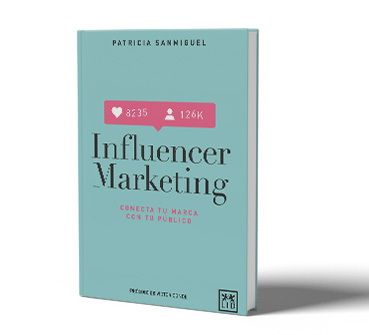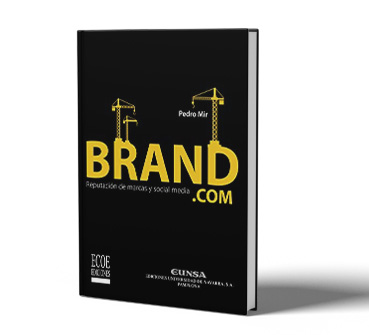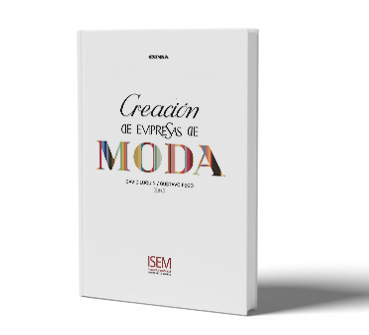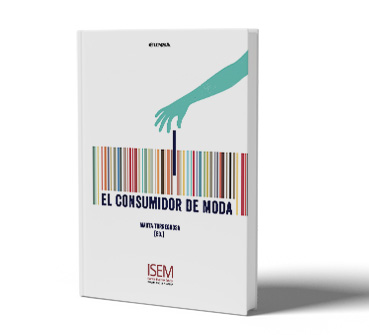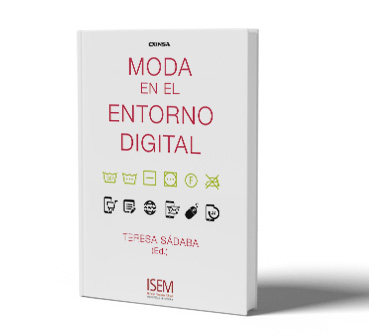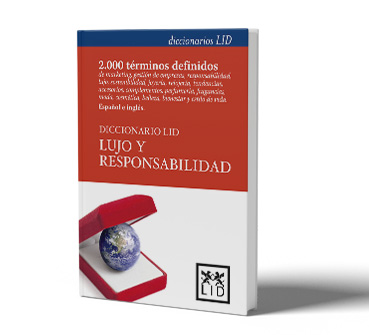Casos de estudio publicados
ÉTICA EMPRESARIAL Y RESPONSABILIDAD SOCIAL CORPORATIVA, LIDERAZGO Y DIRECCIÓN DE PERSONAS
En estas partes del caso “Matteo Manzani” se describe una trayectoria profesional en el sector de la moda. Matteo trabaja en diferentes empresas con estilos de dirección variados: pasa de un ambiente muy estructurado a una dirección paternalista. En los textos se detallan las decisiones que Matteo debe afrontar, tanto a nivel personal como en el desarrollo internacional de una de las empresas.
Autores: Arias Lara, Luis; Susaeta Erburu, Lourdes; Pin Arboledas, José Ramón (2016).
- Referencia: DPO-385
Caso escrito en colaboración con IESE.
DIRECCIÓN ESTRATÉGICA, FINANZAS, INICIATIVA EMPRENDEDORA
El comercio electrónico de moda tuvo como principal impulsor a los private clubs (un modelo de negocio iniciado por la francesa vente-privee en Francia en 2001). Por un lado, ayudaba a quitar el stock de las marcas de forma discreta y permitía a los clientes comprar productos de moda a grandes descuentos que no podían encontrar digitalmente de ninguna otra manera, ya que muchas marcas no disponían de comercio electrónico e, incluso, en algunos casos, ni tan siquiera de pagina web. Esta circunstancia ayudó a que esta tipología de empresas de comercio electrónico creciera en algunos países a un ritmo vertiginoso durante muchos años. No obstante, esta situación no sería perpetua y los private clubs eran conscientes de que deberían de crecer a través de la diversificación y el establecimiento de una marca clara y concisa.
Autores: Fernandez Garcia-Andrade, Pablo; Oliver Conti, Xavier. (2015).
- Referencia: M-1330
Caso escrito en colaboración con IESE.
STRATEGY , LEADERSHIP AND PEOPLE MANAGEMENT
The case “It’s in the Bag. Or Is It? Michael Kors’ Quest to Stay at the Top” describes the meteoric rise of this fashion company and outlines the strategic options it might consider for the future. The year 2014 marked three years since Michael Kors Limited had completed a successful IPO. But John Idol (CEO) and Michael Kors (Chief Creative Officer) needed to take stock. There were indications that the handbag market might be becoming saturated. Also, there were concerns that the brand risked losing its appeal. International growth was critical to the future of the company and it remained to be seen whether its approach would work in Europe and Asia.
Autores: Arribas, V., Tozer, A., Baldo, A., and Ferraro, F. (2014).
- Referencia: SM-1619-E
Caso escrito en colaboración con IESE.
STRATEGY , LEADERSHIP AND PEOPLE MANAGEMENT
Abercrombie & Fitch (A&F) se fundó en 1893 en Estados Unidos como una tienda que vendía artículos de acampada y excursión y armas. En 1988 fue adquirida por The Limited, creadora de marcas americanas de éxito. Con el fin de resucitar la marca y darle un nuevo aspecto, se puso a Mike Jeffries al frente, quien, durante más de diez años, logró renovarla hasta convertirla en lo que es actualmente. Su obsesión por la belleza constituye su ventaja competitiva y el pilar de su estrategia, que se refleja en clientes, empleados, tiendas, productos, etc. Sin embargo, la compañía se ha visto envuelta en diversas polémicas y ha sido acusada de discriminación.
Autores: Arribas, V., Garcia, I., Susaeta, L., and Pin Arboledas, J. R. (2014).
- Referencia: DPO-303
Caso escrito en colaboración con IESE.
DECISION ANALYSIS , LEADERSHIP AND PEOPLE MANAGEMENT , MARKETING
Este caso trata el dilema de una “perfecta vendedora” y su ascenso en la organización. Se refleja cómo la protagonista, Rita Rodier, tiene muchas competencias para la venta pero escasas para la gestión de equipos. Por otra parte, su cercanía con la dirección de la empresa, mediante vínculos informales, hace todavía más difícil su encaje como directivac.
Autores: Luis, Lara; Susaeta Erburu, Lourdes; Pin Arboledas, José Ramón.
- Referencia: DPO 304
Caso escrito en colaboración con IESE.
INNOVATION AND CHANGE , SERVICE AND OPERATIONS MANAGEMENT
Loewe es una de las enseñas del grupo LVMH, conocida sobre todo por sus productos de piel. Para la elaborar su género, Loewe cuenta con fábricas propias y proveedores externos. En el presente caso, la dirección de la empresa tiene que decidir si evoluciona hacia el modelo industrial de otras enseñas del grupo LVMH y externaliza al completo su producción o, por el contrario, convierte su principal fábrica en un centro de excelencia capaz de generar ventaja competitiva para la empresa.
Autores: Moscoso, Philip G.; Duque, Marina
-
- Referencia: P-1116 y P-1116-E; P-1117 y P-1117
- Nota técnica: PT-51-E The Loewe Group (A) and (B): A New Industrial Model and Commitment to Lean Management?
Caso escrito en colaboración con IESE.
LEADERSHIP AND PEOPLE MANAGEMENT
Este caso se centra en la problemática de gestión de diseñadores en las empresas de lujo del sector de la moda. Describe el conflicto interpersonal que se provoca en la empresa entre el director creativo y un nuevo diseñador más orientado al negocio. Describe la problemática de la gestión del ego, la gestión del conflicto y los distintos modelos de diseño organizativo adecuados a este tipo e empresas según sus diferentes estrategias.
Autores: Rodríguez, Cristina; Ortiz de Bethancourt R.; Susaeta Erburu, Lourdes; Pin Arboledas, José Ramón.
- Referencia: DPO-100 y DPO-100-E; DPO-101 y DPO-101-E; DPO-113 y DPO-113-E
- Nota técnica: DPOT-23 y DPOT-23-E Quarelli & Gabbianti
Caso escrito en colaboración con IESE.
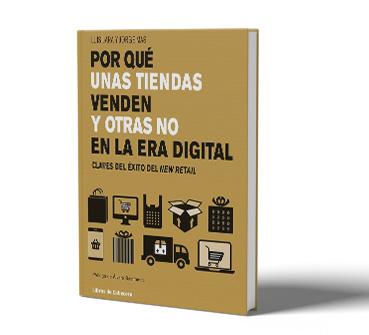
¿Por qué unas tiendas venden y otras no en la era digital? Claves del éxito del New Retail
Autores: Luis Lara y Jorge Mas
Año: 2019
Editorial: Libros de Cabecera
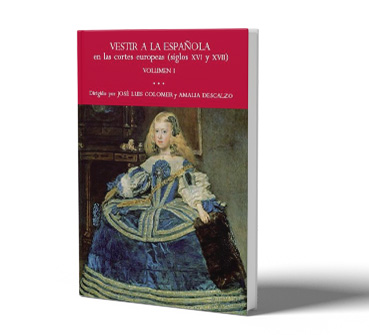
Vestir a la española en las Cortes Europeas (siglos XVI Y XVII)
Autores: José Luis Colomer y Amalia Descalzo
Año: 2014
Editorial: Centro de Estudios Europa Hispánica (CEEH)
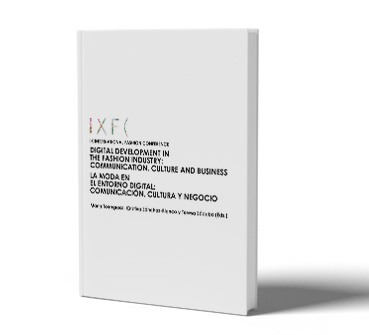
Digital Development in the Fashion Industry:Communication, Culture and Bussines.
Autores: Marta Torregrosa, Cristina Sánchez-Blanco, Teresa Sádaba
Año: 2014
Editorial: IX Congreso Internacional de Moda
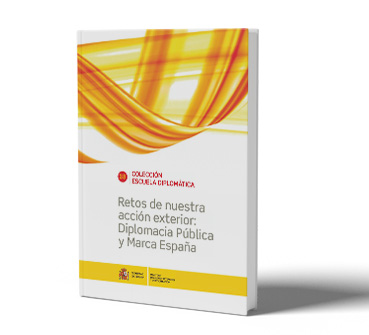
Retos de nuestra acción exterior: Diplomacia Pública y Marca España. Capitulo: Moda y Marca España
Autores: Teresa Sádaba y Luis Lara
Año: 2012
Editorial: Colección Escuela Diplomática
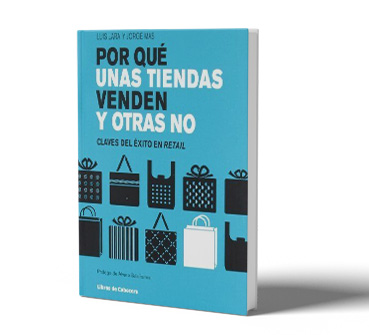
Por qué unas tiendas venden y otras no. Claves del éxito en retail.
Autores: Luis Lara y Jorge Mas
Año: 2012
Editorial: Libros de Cabecera
[+INFO]
Autores: Pedro Mir-Bernal, Simone Guercini y Catherine Prentice
Año: 2018
This paper introduces a special issue devoted to the emergence of new marketing models and tools within a fashion e-commerce context. Despite the importance of physical stores, in recent years, we have witnessed substantial development regarding the electronic trade in fashion products. In effect, fashion products represent a major category within e-commerce and have witnessed the development of a “new” form of online marketing. Special attention should be paid to the internationalization of e-commerce within the fashion industry. New models and tools have emerged in relation to: the technology/ consumption interface and the strategies of the different players within the business sector; the integration of online and offline fashion marketing; the impact of new IT technologies and new marketing on preexisting fashion marketing policies, such as customization; and the role of new emerging players such as fashion bloggers and influencers. In this period of change, new and traditional marketing tools co-exist. The five articles in this special issue seek to contribute to research whose aim is to systemize new models and tools that may be useful for practitioners and marketing researchers working in this field.
Calidad de Servicio en Retail
Autores: Pedro Mir-Bernal, Jacqueline Vidal
Año: 2017
A happy couple is having their wedding at a beach resort on an island near the coast of Venezuela. After the wedding party, the customers take their things from their rooms and ask for the key to the honeymoon suite they have reserved. The receptionist tells them that they have no reservation for the room and that it is not available. The groom asks for a different suite at the resort’s expense since someone failed to make their reservation correctly. How should the resort management handle the issue?
Autores: Pedro Mir-Bernal, María Gracía Accini Moran
Año: 2017
Rosa, a wealthy young woman, planned an elaborate celebration for her twenty-first birthday. She planned a weekend of activities for her friends in Barcelona, rented a beautiful house next to the beach, booked an expensive restaurant dinner, and for the end of the night made a reservation and paid a deposit for a private party at the most upscale bar in Barcelona. Everything went smoothly until a bouncer at the bar ruined her night.
Autores: Pedro Mir-Bernal, Rouxelle de Villiers, Po-Ju Chen, Linda Coleman, Tung-Cheng (TC) Huan, Arch G. Woodside
Año: 2017
This special issue includes 27 customer experience (CX) trade tales as told in the words of real shoppers and customers. Some tales are of dilemmas and cognitive dissonance, whilst others share their elation at receiving the value, satisfaction, and respect they felt they deserved. When reading these accounts, you are likely to agree that there is much more to consumers’ everyday buying decisions and experiences than what meets the eye of the customer care officer, the representative or business owner (collectively called marketers here) at first glance. The emotive language and illustrative narratives emphasize the affective, intellectual, emotional, and social impact of good and bad responses by organizations to interactions with customers. You will quickly notice how positivelyinclined customers can turn from highly impressed, excited and actively engaged clients, to negatively valanced antagonists, defending their point of view, or (in sharp contrast) respond to a sales interaction with passive aggressive behaviour. Surface to deep assessment follow each trade tale. Many of the tales are useful materials for creating emotional and insightful learning dramas for improving empathy and communication skills of those among us who interact with customers.
Autores: Pedro Mir-Bernal, Teresa Sádaba, Simone Guercini.
Año: 2017
The aim of this paper is to analyze the role that e-commerce has to play in the internationalization of Spanish luxury multi-brand stores. Possible answers are sought to the following research question: How might the adoption of e-commerce platforms affect the international sales of multi-brand retailers? This paper presents a data analysis of the 15 most important Spanish fashion multi-brand retailers and the different prospects of e-commerce today. Our analysis of online stores shows an open mentality when it comes to adapting to this new business model, but the late integration and inexperience of the majority of retailers limit their performance. Information from different channels and further research through the collaboration of brands would have given us more detailed information regarding the current situation within this sector. The paper analyzes the current situation of e-commerce luxury fashion multi-brand stores and mainly focuses on the Spanish market, even though it also offers a global overview.
Autores: Patricia SanMiguel, Teresa Sádaba, Sandra Bravo.
Año: 2017
Este artículo analiza el papel de la comunicación personal y los líderes de opinión en la difusión de tendencias de moda; donde el aumento de las colecciones de ropa realizadas por las marcas, la democratización de la moda y el creciente papel de la ‘calle’ para dictar tendencias plantean comprender mejor dichos procesos de difusión. Se realiza un análisis de las distintas aportaciones científicas en el campo de la difusión de innovaciones y las investigaciones en torno al liderazgo de opinión y la influencia personal. El análisis identifica el auge de la comunicación personal y los líderes de opinión, los procesos de difusión de tendencias de moda –que van desde la imitación entre clases sociales a la propagación viral–, y el liderazgo de opinión e influencia personal en la moda. Este trabajo destaca el papel fundamental que los líderes de opinión ejercen, a través de la comunicación personal, para que una tendencia de moda sea adoptada o rechazada por los consumidores.
Autores: Marco Pedroni, Patricia SanMiguel, Teresa Sádaba.
Año: 2017
Is the golden era of fashion blogging over? In more than a decade after their first appearance fashion blogs have established themselves as a constant element on the fashion scene, but in many aspects, they have not yet found a definitive position in the field of fashion media, at least in terms of legitimization. Blogs have been often celebrated as instruments for the democratization of fashion, able at the same time to reduce the distance between «the establishment» and ordinary fashion lovers and to push young and unknown outsiders toward the centre of the fashion system; on the other side they have been opposed – at least at the beginning – both by fashion journalists and companies, the former looking at blogging as an unprofessional practice that threatens to destroy the quality of the fashion-related tales, the latter displaced in front of the new ‘fashionable’ practice of inviting bloggers to catwalks and using them as testimonials.
The arguments made in this chapter are based on quantitative and qualitative research carried out in Italy and Spain. Through a desk analysis of the twenty most popular blogs (ten for each country), according to the ranking provided by Le Guide Noir, we investigated the features of the bloggers with the highest level of visibility and they activity on the social media, as some recent studies points out (Sádaba and SanMiguel, 2016). It must be remembered that, even if we label them as bloggers, they manage a structured communication strategy whose blogs are just a piece together with Facebook, Twitter, Instagram, Pinterest accounts, and so forth. We also recruited a snowball sample of 62 bloggers who were interviewed with qualitative techniques. The Italian sample includes 42 interviewees (11 male, 31 female); testimonies are based on a non-directive method («life- story approach», see Bertaux 1981) and have been collected between 2011 and 2015. The Spanish branch of the study relies on semi-structured interviews to 20 bloggers (3 male, 17 female) collected between 2014 and 2015 .
Autores: Frances Pujol, Teresa Sádaba, Patricia SanMiguel
Año: 2016
El estudio Impacto Digital de Marcas de Moda y Lujo 2016 es un análisis comparativo de 120 marcas de moda y su comportamiento en el mundo online que permite:
Analizar el comportamiento de 120 marcas de moda: fortalezas y debilidades en sus estrategias digitales.
Establecer un análisis comparativo de cada marca respecto a sus competidores.
Identificar tendencias de moda que se crean y difunden desde las redes sociales gracias al análisis de contenidos publicados.
Conocer el posicionamiento de las marcas españolas en un entorno digital sin fronteras.
Conocer el posicionamiento de firmas internacionales en el mercado español.
Aprender de las mejores prácticas de comportamiento digital.
Ayudar en la toma de decisiones sobre estrategias de marketing digi
Autores: Teresa Sádaba, Patricia SanMiguel.
Año: 2016
Little but increasing research has been done about the influence of blogs in the consumer decision- making process. This paper tries to shed some light on this new scenario, analyzing how bloggers are now a key player in the fashion industry, and explaining how they create a closer and more qualified relationship with customers, so they can be more influential. Based on a case study, and considering different approaches to bloggers influence, this article makes it clear that measuring the engagement between bloggers and readers is significant for brands and their marketing strategies with bloggers.
Autores: Teresa Sádaba, Patricia SanMiguel.
Año: 2016
Since Paul Lazarsfeld’s study on the influentials, carried out in the forties, research on opinion leaders have been developed mainly in the political field. Nevertheless, in his studies, Lazarsfeld focused his attention on other areas such as fashion. Lazarsfeld identified influentials as those people with a “leadership almost invisible and certainly unconscious, face to face; close, informal and daily”, being able to influence in their relatives’ voting and purchasing decisions. These opinion leaders’ or influentials prescribing ability was and is today very powerful and of great interest for its study. Clearly, the influence of the Internet in society has changed the way we communicate, interact and consume. In the fashion area, a research study about the influentials after the advent of the Internet has not been done yet. As a consequence, the main goal of this research is to fulfill this de cadency by providing data of the in influentials in fashion, in the Spanish case.
Autores: Teresa Sádaba, Patricia SanMiguel.
Año: 2016
On 24 April 2013 at 9 o’clock in the morning local time, the Rana Plaza building in Dhaka collapsed. This factory produced clothing for 29 different fashion brands. The final casualty figures came to 1,129 dead and 2,515 injured. The Rana Plaza case is the worst accident in the history of fashion manufacturing. The management of the crisis on the part of the individual brands was extremely diverse and led them towards different communications scenarios. However, another crisis emerged at that moment: the industry itself and its manufacturing methods were effectively called into question. In fact, this issue has continued to be controversial and has led to an interesting public debate.
Through the case analyzed here, this paper seeks to meet three objectives: a) stress the importance of communication with regard to the management of the crisis; b) highlight the link between crisis communication and corporate social responsibility; c) focus attention on the fashion industry, where intangible values acquire considerable importance and, therefore, are especially affected by crises.
The events at Rana Plaza raise different questions that pose a challenge regarding crisis communication, given that we are dealing with an industry-wide crisis featuring multiple voices and multiple reactions.
Autores: Pablo Foncillas, Patricia SanMiguel.
Año: 2015
En este capítulo se abordarán las claves de los 6 pasos a tener en cuenta para desarrollar un buen e-commerce, por tanto no se pretende hacer un análisis exhaustivo, sino proporcionar algunas pautas para evaluar y desarrollar los cambios estratégicos adecuados en tu empresa.
Si el comercio electrónico fuera una música hay que tomar conciencia de que es totalmente nueva y que por ello debemos aprender a bailar de otra manera. Eso exige entender, al menos, seis piezas que constituyen las claves para aprovechar las ventajas que ofrece esta nueva forma de transaccionar. Siguiendo con el símil musical estas partes serían: El escenario en el que bailamos (el contexto), el público (los clientes), los tipos de baile (tipologías de comercio electrónico), la técnica de baile (los pasos imprescindibles del ecom), el disc-jockey (consejo de administración) y el entrenador (comité de dirección). Es decir, dimensiones de perfil humano y dimensiones técnicas (pero ninguna de ámbito tecnológico, la tecnología es lo último en lo que debemos pensar a la hora de desarrollar el comercio electrónico).
Autores: Teresa Sádaba, Patricia SanMiguel.
Año: 2015
Hablar de comunicación y moda es hablar de influencia. Con la comunicación se activan los mecanismos de imitación e influencia que propician este fenómeno que denominamos moda. La imitación, como esfuerzo por parecerse a los demás, y la influencia, como capacidad de prescripción, son los ejes fundamentales de la opinión pública. Y ambos, imitación e influencia, son también los fundamentos de la moda. Detrás del éxito de las zapatillas Converse, de las chaquetas Bomber o de que esté de moda la barba o el bigote, hay toda una historia de imitación y de prescripción. Para la moda, la ventaja hoy en día, es que en nuestro nuevo entorno tecnológico, no son sólo los medios quienes tienen esa capacidad de crear climas de opinión, sino individuos que desde sus tablets o teléfonos, son capaces de generar climas sociales a través de sus redes de influencia.
Autores: Patricia SanMiguel, Teresa Sádaba, Marco Pedroni.
Año: 2016
After ignoring the rise of fashion bloggers as new actors in the fashion scene, over the last few years a number of contributions have explored this topic (Rocamora, 2011, 2012, 2013; see also Berry 2012; Chittendon 2010; Connell 2013; Kretz 2010; Lewis 2013; Rocamora and Bartlett 2009; Pedroni, 2014; Sádaba and SanMiguel, 2014; Mora and Rocamora, 2015; Findlay, 2015). These works analyse the role of fashion blogs, their legitimation in the field of fashion media and their influence on the consumer decision-making process. Also, in previous works of the same research team, the evolution and categorization of the fashion bloggers has been analysed to conclude that blogs have gained a more institutionalized and normalized role in the field of fashion. Despite the presence of many aspirational bloggers, the field has left its “innocent stage” and become highlyprofessionalised and institutionalised, but there are significant differences by countries. In this paper, we aim at going further with the analysis of the field of fashion blogging and its evolution. It is discussed how the process of professionalization is taking place, by considering bloggers’ relationship with brands, the transformations of blogs towards a business model, together with bloggers’ view of the future. Differences among countries are also analysed. The methodological approach is twofold: a comparative analysis between Spain and Italy is carried out through a both quantitative and qualitative analysis. The results of a survey (220 participants, 110 in each country) and 88 qualitative interviews to both Spanish and Italian fashion bloggers are discussed. Findings will contribute to understand the process of professionalization of fashion bloggers and to conclude that the “golden era” of fashion blogging (a mythical period of prosperity and abundance) is over, even if the scenario varies by country. After the emergence of fashion bloggers, a more institutionalized social field has emerged and it works as a part of the contemporary fashion system.
Autores: Patricia SanMiguel, Teresa Sádaba, Marco Pedroni.
Año: 2016
The impact of the Internet on society has clearly changed the way we communicate, interact and consume. In the communication and marketing area institutional agents like companies try to find the best way to reach their consumers in the online scenario, but outsiders (such as fashion bloggers) are often able to achieve significant results by using Web 2.0-based tools and innovating the language of fashion communication.
Since the 1990s several studies have shown that marketing based on opinion leaders (Influentials/influencers) is one of the most successful strategies (Mowen, 1990; Weimann, 1994; Keller & Berry, 2003). Which are the personal characteristics of these leaders in fashion? Are fashion bloggers the new influencers? How do they interact with readers and brands? How do these leaders work in the Mediterranean Europe?
This paper explores these issues through a comparison between the Italian and Spanish fields of fashion blogging, where the rise of these new opinion leaders has begun later than in the Anglo-Saxon world, presenting the first Fashion Influentials comparative study between two countries. The study is made of two sections: first, an opinion leadership questionnaire (sample: 200 bloggers, 100 for each country); second, a desk analysis of the twenty most popular blogs (ten for each country) with the highest level of visibility and their activity on the social media.
Findings show the profile of influential fashion blogger (personal characteristics, knowledge criteria and social factors) and the way they interact with their community and fashion companies. From an interpretative point of view the paper (second in a series of comparative studies realized by the authors) aims at discussing fashion blogging as a social field able to change the way the whole system of fashion communication works.
Autores: Teresa Sádaba and Patricia SanMiguel
Año: 2014
La investigación sobre el liderazgo de opinión ha sido tradicionalmente tratada por la comunicación política, desde que Paul Lazarsfeld inaugurara el estudio sobre los influyentes. No obstante, Lazarsfeld también investigó la influencia en el área de la moda. La capacidad de prescripción de estos influyentes es una cuestión muy relevante para las marcas de moda y centra el interés de este estudio. Se trata además del primer estudio realizado sobre influencia en moda teniendo en cuenta los avances que permite en este ámbito la aparición de Internet.
Autores: María Eugenia Josa Martínez y Carlos Naya
Año: 2016
A mediados de los años 50, se produjo en España una corriente de modernización de las formas que permitió actualizar la imagen del país. Esta renovación fue impulsada por las instancias oficiales españolas que se posicionaron en pro de un nuevo diseño y una nueva arquitectura que fuese capaz de competir con las creaciones foráneas. En pleno debate en torno a la integración de las artes plásticas y la arquitectura, aquella modernización abogaba por la colaboración entre arquitectos, artistas e, incluso, empresas, que trabajarían en equipo para transformar tanto las claves de los objetos de diseño y de las obras de la arquitectura española, como las estrategias comerciales y de imagen de las empresas.
En la futura comunicación se analizará la obra de Carvajal para Loewe como ejemplo de creación de imagen de marca y diseño comercial, abordando el proyecto de la tienda de Serrano a través de su arquitectura. Con ello se pretende, por un lado, poner en valor el papel de la obra de Javier Carvajal en este ámbito empresarial, y por otro, reflexionar acerca de esta cuestión para aportar nuevas ideas aplicables a otros casos en la actualidad. Para ello, se consultarán las fuentes bibliográficas de aquel momento —las revistas españolas de arquitectura Nueva forma, Arquitectura y Hogar y arquitectura— así como, la bibliografía específica del campo de investigación —tesis doctorales, catálogos de exposición, monografías y artículos.
Autores: María Eugenia Josa Martínez y María Villanueva Fernández
Año: 2014
The essence of fashion is the constant renewal of its forms, but at times, the relevance of tradition in the fashion industry can be forgotten. However, the past is unavoidable, and in many cases tradition has become the fundamental element of the modernization of the brand and even the key to its success. In order to show the importance of tradition in terms of modernity, the following paper will address the case study of Loewe as an example of this phenomenon. Loewe launched a project to modernize the brand to project a corporate identity related to the prestige, exclusivity and uniqueness and materialized through craft production methods and carefully designed. For this project the firm counted on the architect Javier Carvajal and the artist Vicente Vela, who designed a new look for the stores, the brand and the product, providing a renewed vision of Loewe. This turn toward modernity was based on the analysis and the application of the qualities of the Spanish tradition and craft, from that moment will become part of the identity of the firm.
By the end of 2013 Jonathan Anderson arrived at Loewe, as the new Creative Director, he gave a fresh take on the brand based on its history, by returning it to its origins. Jonathan is inspired by the most brilliant period of Loewe, which he considers the 50’s, 60’s and 70’s. This new project is promoting a new change, reinventing a legacy of 168 years of craftsmanship and innovation.
Autores: María Eugenia Josa Martínez y María Villanueva Fernández
Año: 2014
La constante renovación de su imagen forma parte de la propia esencia intrínseca de la moda. Lo cual no es posible sin tener presente el estado previo, el pasado o, en otras palabras, la tradición. De modo que, en muchos casos, esta tradición se ha convertido en el elemento fundamental para la modernización de la identidad de la marca e incluso la clave de su éxito. Con el fin de mostrar cómo la tradición influye en la evolución de la imagen de marca, la futura comunicación tiene como objetivo estudiar del caso de Loewe como un ejemplo de este fenómeno. En este trabajo se aborda esta cuestión a través del análisis de la evolución de la imagen de Loewe, poniendo en relación el periodo iniciado en 1956 —cuando comenzó el proceso de renovación de la firma hacia la modernidad de la mano de Javier Carvajal y Vicente Vela, entre otros— y el momento actual —en el que se apuesta por la recuperación de aquella brillante etapa con Jonathan Anderson como director creativo. Esta investigación revela la importancia de la tradición en la evolución de la imagen de la marca, analizando los tres planos del diseño a través de los cuales se produce la renovación de Loewe: sus tiendas, su logo y sus productos. De este modo, este trabajo arrojará luz sobre el valor de la tradición en la imagen de los negocios de la moda, con el fin de aportar nuevas ideas aplicables a otros casos actuales.
Autores: María Eugenia Josa y Diego Vega
Año: 2016
La fotografía, en los años cincuenta, alcanza la mayor importancia en la difusión de la imagen a todo el mundo. Será la encargada de hacer llegar la imagen allí donde no llegue la estática arquitectura para permanecer en la memoria de quién nunca estuvo en ella. La fotografía cobrará importancia ligada a la revista, en la que se multiplicará para ser vista y vuelta a ver. Carvajal, en su afán de proyectar una nueva imagen de Loewe supo que era indispensable contar con la fotografía y los medios de comunicación de aquel momento para publicitar sus tiendas. De esta manera, la elección del arquitecto a la hora de escoger los medios en los que iban a ser publicados los proyectos, supuso un salto cualitativo importante para la firma.
En este trabajo se abordará la importancia que tuvo la fotografía como parte de la renovación de la imagen de Loewe. Se mostrará la relevancia del trabajo de Francesc Catalá Roca y Elías Dolcet, mediante el análisis de sus fotografías y la difusión de las mismas. De este modo, el presente estudio arrojará luz sobre el valor de la tradición de la imagen de los negocios de la moda, con el fin de aportar nuevas ideas aplicables a otros casos actuales.
Autores: María Eugenia Josa Martínez y María Villanueva Fernández
Año: 2016
The paper addresses Loewe’s image renewal based on the modernization of tradition as a luxury strategy, through the analysis of one commercial space designed by Carvajal: the Loewe Serrano Street store. Carvajal fused traditional craftsmanship with new modern forms referencing the work of architects and designers from northern Europe. This research shows the Nordic influences in this project through the study of three technical aspects: form-space, materials and design.
These issues have been analyzed by comparing the work of Carvajal with the work of architects and designers such as Alvar Aalto Nordic, Arne Jacobsen, Hans Wegner or Gunnar Asplund. Numerous similarities have been found such as curved spaces, the use of wood, similar forms applied to different designs… These common parameters show the real influence between Nordic architecture and Loewe spaces.
In addition, the consultation of the personal archive of the architect Javier Carvajal, as well as, the bibliographical sources of that moment —Spanish magazines Nueva forma, Arquitectura and Hogar y arquitectura— and other specific references of the research field —exhibition catalogs and monographies— is conducted. By doing so, this paper demonstrates how merging tradition with modern forms provided an image of exclusivity, luxury and innovation to Loewe, something the brand is recovering today.
Autores: Amalia Descalzo Lorenzo
Año: 2014
Todas las creaciones a las que llamamos “vestidos” han sido materializadas con textiles o materiales aptos para adaptarse a las formas naturales del cuerpo humano. Sastres, modistos, diseñadores y artífices de la moda han sido conscientes de la importancia de los materiales con los que trabajaban para ejecutar sus ideas. Nuestro estudio subraya la importancia que el gran modisto Balenciaga concedía a los tejidos, naturales o artificiales, hasta el punto de decir que “el tejido es el que manda”. A través de este trabajo analizamos las siluetas más innovadoras de la obra del modisto así como los materiales que eligió para su realización. El estudio se ha focalizado principalmente en la década de los años cincuenta y sesenta hasta su retirada del mundo de la moda, pues fue en estos años en los que Balenciaga creo las líneas más innovadoras de toda su carrera a la vez que sentó las bases de lo que sería el vestido y la moda después de él.
Autores: Verónica Arribas and Isabel García
Año: 2014
En este artículo lo que se pretende es analizar algunos aspectos éticos relacionados específicamente conel sector de la moda. Con este objetivo se analizará la estrategia y estilo de dirección de una empresareferente en el mercado de “ropa juvenil”: Abercrombie&Fitch (A&F). Se ha elegido esta empresa comocaso de estudio por numerosas y controvertidas reacciones que su política de marca ha suscitado en losúltimos años. La estructura que se va a seguir consta de dos partes. En primer lugar, se realiza una revisiónbibliográfica acerca del concepto de ética empresarial (business ethics) tratando de identificar aquellasaportaciones que son relevantes para la industria de la moda. Y en segundo lugar , se analizará el caso de laempresa A&F como soporte empírico de ideas aportadas en la parte primera. Por último, se plantean unaserie de preguntas que dejan abierto un posible debate al hilo de todo lo expuesto.
Autores: María Eugenia Josa y María Villanueva
Año: 2014
En 1872 llegó a Madrid el artesano alemán Enrique Loewe Roessberg, atraído por el proceso de expansiónque estaba experimentando España en ese momento. Al mismo tiempo que su negocio en el sector del cueroevolucionaba, Enrique Loewe fue ocupando distintos locales que emplearía como talleres, zonas expositivasy locales comerciales1. La arquitectura se convirtió desde el principio en una de las herramientas principalespara potenciar la empresa y para acercarse a un tipo de clientela distinguida, entre la que se encontraría apartir de 1905 los reyes Don Alfonso de Borbón y Doña Victoria Eugenia2.El exquisito sector social al que iba dirigida la firma obligaba a una constante mejora de susespacios comerciales. En 1939 Loewe inauguró la emblemática tienda situada en la céntrica Gran Vía nº8.Este local comercial fue diseñado por el arquitecto Francisco Ferrer Bartolomé3, quien un año despuéstambién se encargaría del proyecto de la tienda situada en el Paseo de Gracia de Barcelona4. Además, aquellos espacios se adecuaban a la elevada calidad del producto que ofrecía la firma, confeccionado con losmejores materiales, un aspecto que le había proporcionado la fama desde su nacimiento5.Se trataba de un tipo de diseño afianzado en un clasicismo que no se alteraba por las nuevastendencias de la época. Sin embargo, a partir de 1956 aquella dirección formal de la empresa dio un girosignificativo, cambiando su rumbo hacia la modernidad. En esta tarea adquirió especial importancia lacolaboración de la empresa con otros profesionales, como el arquitecto Javier Carvajal y el artista VicenteVela, quienes diseñaron para Loewe un proyecto de imagen comercial española.
Autores: Teresa Sádaba and Patricia San Miguel
Año: 2014
En los últimos años, las cuestiones relacionadas con sostenibilidad y conductas éticas en el ámbito de lamoda han comenzado a estudiarse desde una mirada crítica (Emberley, 1998; Moisander y Personen, 2002).Con la irrupción del modelo de “Fast Fashion”, la producción y distribución de la moda ha cambiado suritmo y necesita unas herramientas de fabricación a bajo coste que encuentra, principalmente, en países endesarrollo. En estos países, las cuestiones ligadas a las condiciones laborales y el entorno de los trabajadoresde una industria de grandes cifras arrojan cuestiones éticas relevantes (Aspers y Skov, 2006).En este contexto, las crisis y su comunicación resultan decisivas para la reputación de las marcas.Aunque se ha profundizado bastante en el conocimiento de la gestión de las crisis (Pearson y Clair, 1998),a la luz de las actuaciones que se analizan, se podrán observar las consecuencias que dicha gestión puedetener sobre las marcas. Este trabajo centrará su análisis en la crisis vivida en Bangladesh en abril de 2013y cómo tienen lugar las respuestas de las distintas empresas de moda. De este modo, se plantean temas derelevancia para la reflexión, y sobre todo, para acciones futuras.
Autores: Verónica Arribas, Teresa Díaz, María Eugenia Josa, Patricia Sanmiguel, Teresa Sádaba
Año: 2013
Resumen: Hoss Intropia is one of the Spain‟s largest fashion brands and th e first one that since its birth aims to generate the lowest possible impact in society and environment. Sustainability in the fashion industry has become a widely discussed issue. The fast fashion brands contribute to this matter. It is widely accepted th at the fashion industry needs new attitudes towards ethical and environmental practices. In this paper we will try to investigate the case study of susta inability in the brand strategy. Hoss Intropia was created in 1994, has presence in 48 countries with 1 600 points of sale. We consider that nowadays this Spa nish brand is a good example not only for new trends in branding but also in the way they are influenced by this matter within all the business activities. This case study takes us to be able to offer s ome conclusions extendable to o ther brands and highlights the role of sustainability as a strategy goal.
Autores: Teresa Sádaba y Patricia Sanmiguel
Año: 2013
Since Paul Lazarsfeld’s pioneering study of influentials in the 1940s, research into opinion leaders has focused primarily on the field of politics. However, Lazarsfeld himself addressed a number of other areas, including fashion. Lazarsfeld defined influentials as people who exercise an “almost invisible, certainly inconspicuous form of leadership, at the person-to-person level of ordinary, intimate, informal, everyday contact”, and who are able to influence the voting and purchasing decisions taken by their relatives, friends and acquaintances. The prescriptive power of such opinion leaders or influentials remains prevalent nowadays, and is of acute relevance to the overall purpose of this paper. The impact of the Internet on society has clearly changed the way we communicate, interact and consume. No research into the role of influentials in the fashion sector since the advent of the Internet has yet been carried out. Thus, the primary objective of the study presented here is to meet this research need by drawing on data relating to influentials in the Spanish fashion sector.


